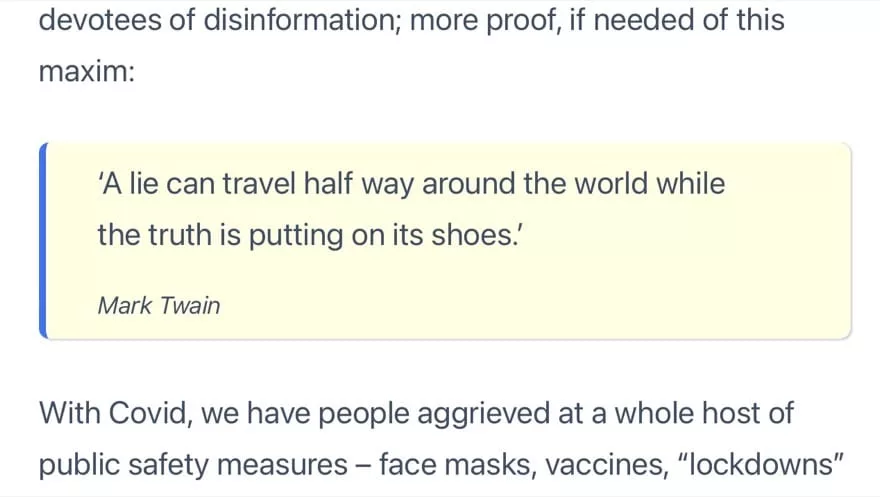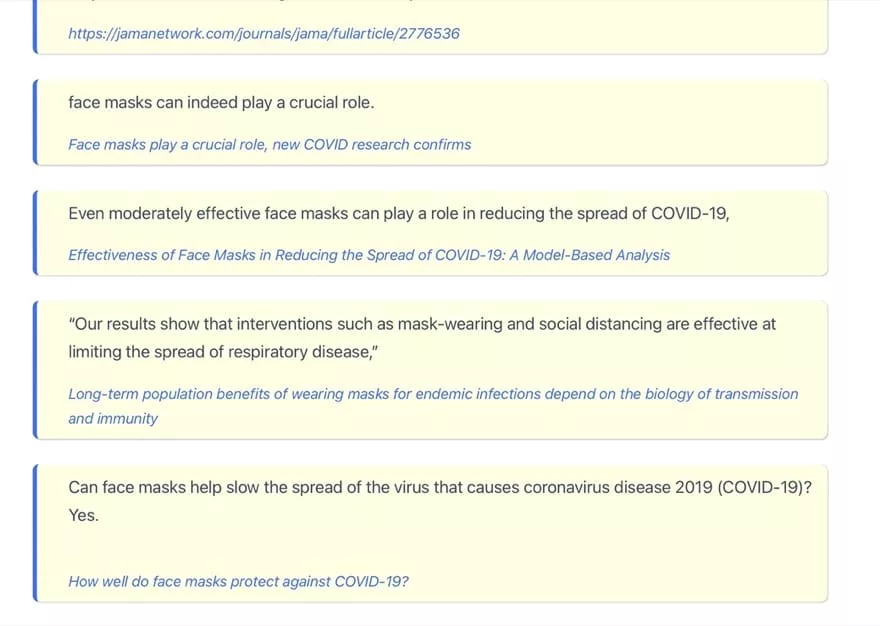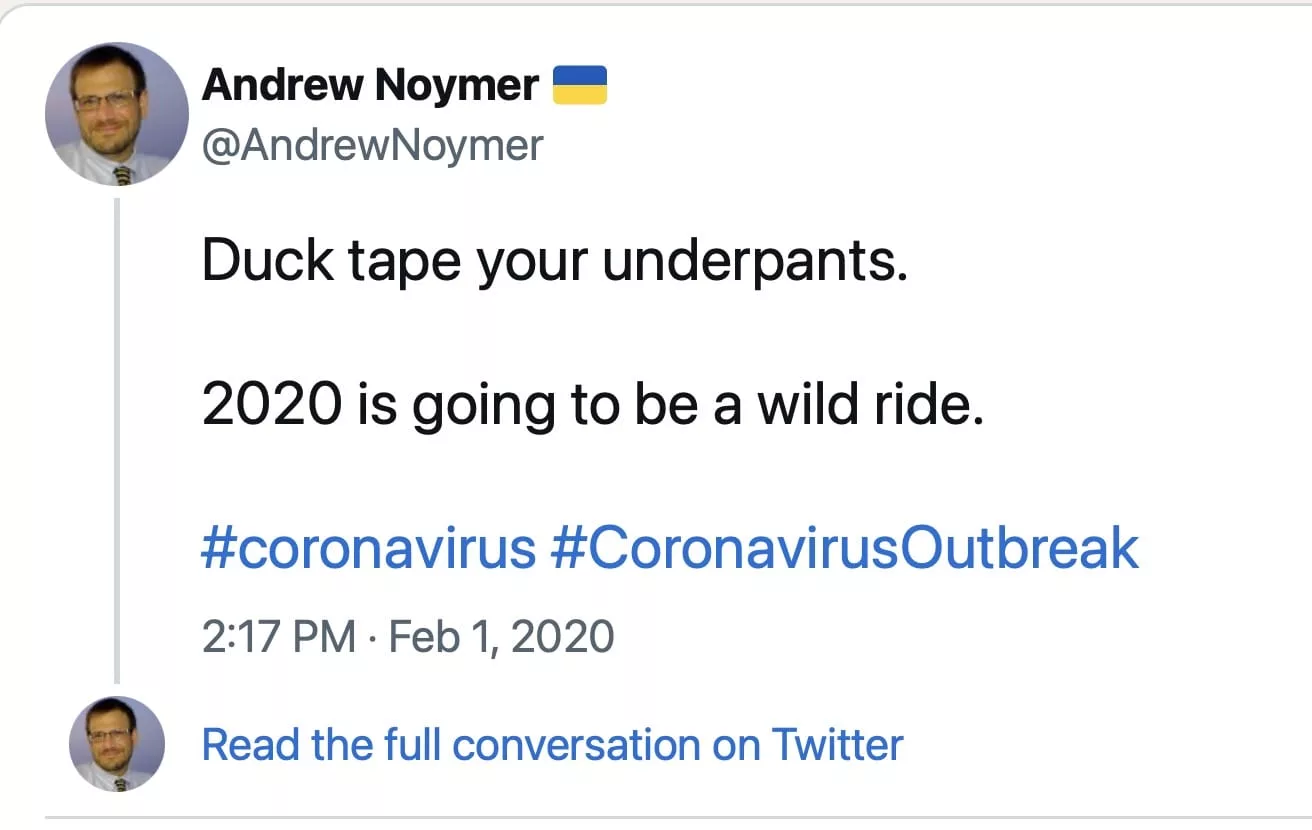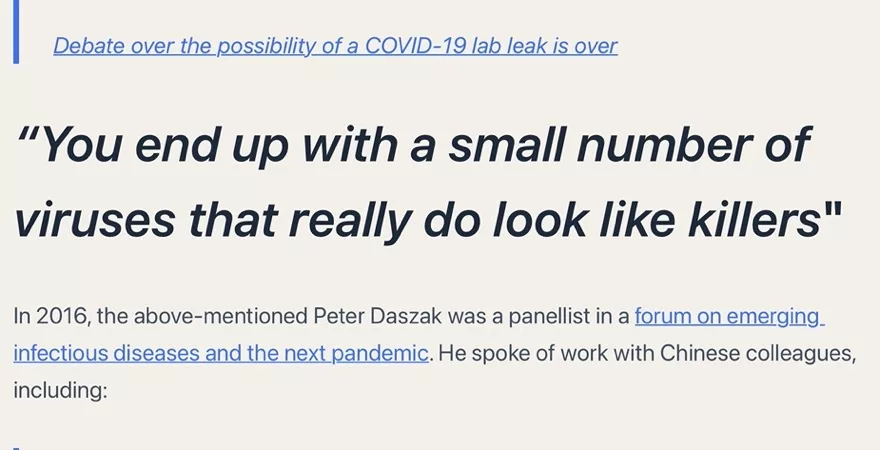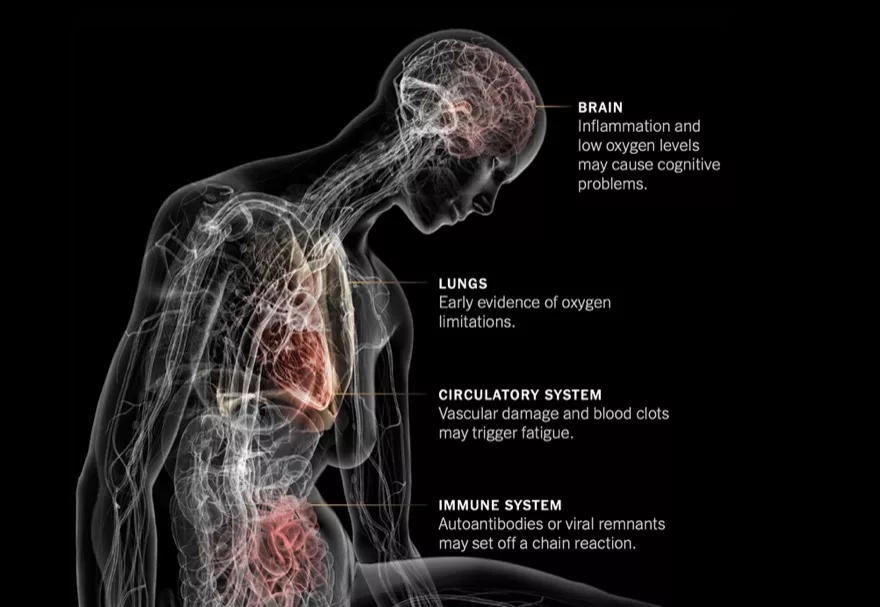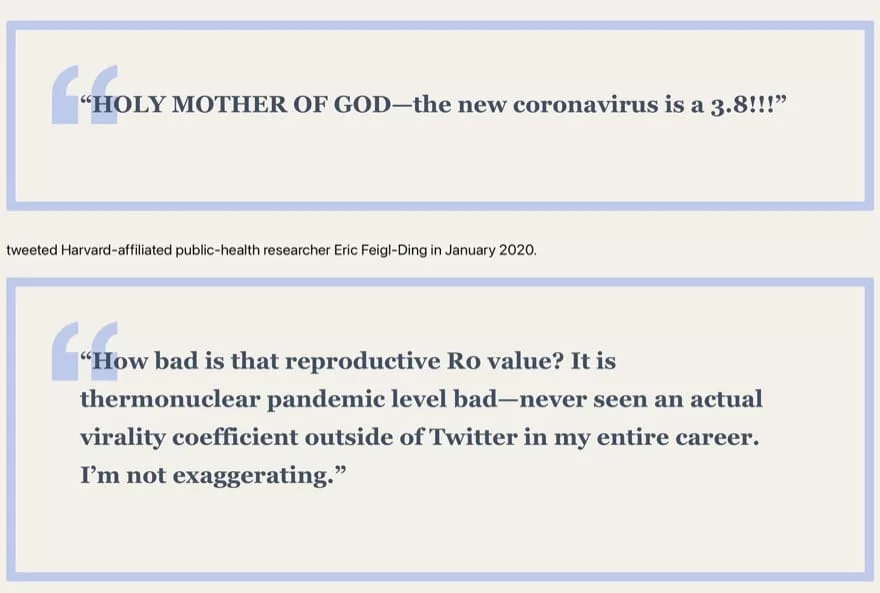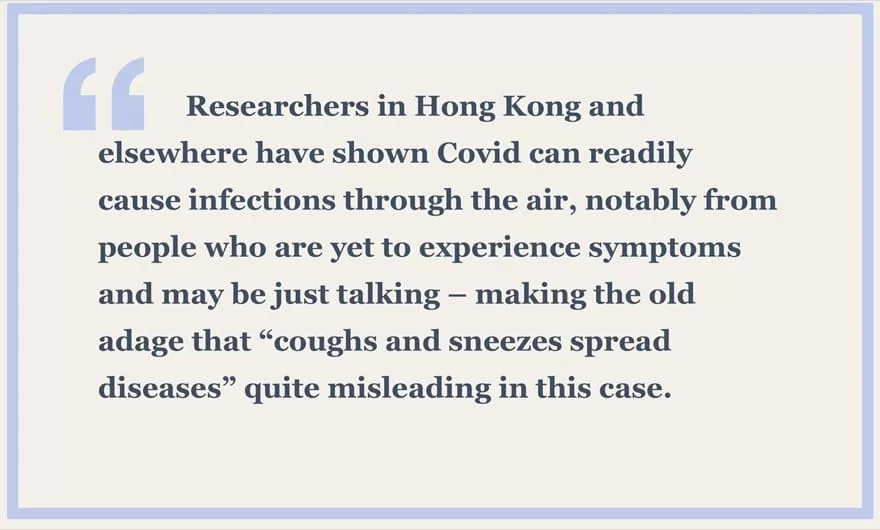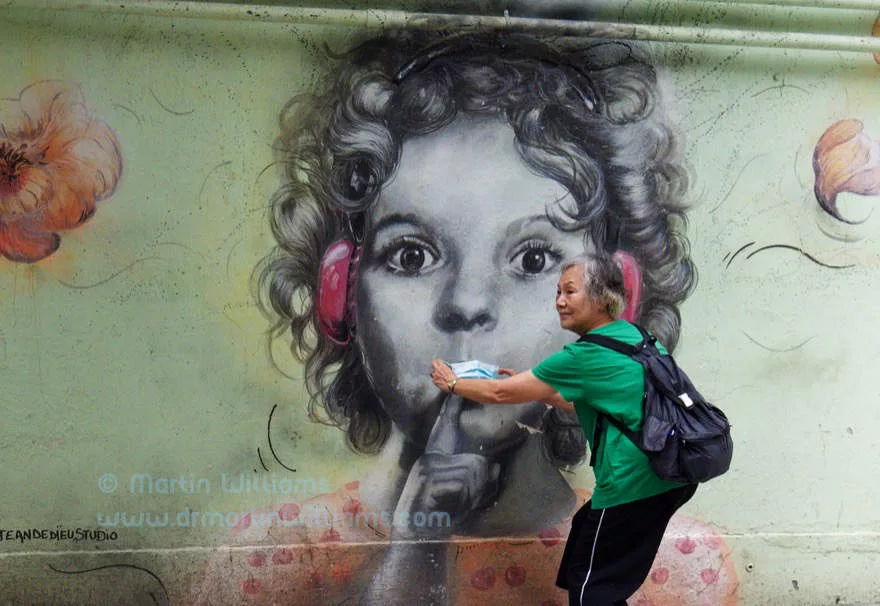Guan Yi, director of the State Key Laboratory of Emerging Infectious Diseases at Hong Kong University, has extensive experience of viruses; yet after a brief visit to Wuhan in January, remarked “I’ve never felt scared. This time I’m scared.”
[Written for South China Morning Post, published on 29 February 2020]
In 2007, four disease experts at the University of Hong Kong published a paper on SARS, in which they concluded, “The presence of a large reservoir of SARS-CoV-like viruses in horseshoe bats, together with the culture of eating exotic mammals in southern China, is a time bomb.” Now, that time bomb is going off – and we may be experiencing the onset of a pandemic of kind not seen for 100 years.
Compared to regular bombs, this may seem slow, even a non-event. Yet consider this: just over five weeks have passed since 22 January when the disease know officially called Covid-19 (and caused by the SARS-CoV-2 virus) hit the headlines as Wuhan announced a transport lockdown. Then, there were 17 reported deaths; that figure has since surged past 2979 – over 170 times higher – and the coronavirus has spread to 64 countries and territories worldwide.
Though the World Health Organization seems leery of announcing there’s a pandemic, the “p word” is being increasingly used. And not simply as part of a media scare, or political hoax.
Guan Yi, director of the State Key Laboratory of Emerging Infectious Diseases at Hong Kong University, has extensive experience of viruses including bird flu and SARS. Yet after a brief visit to Wuhan in January, he told Caixin, “I’ve never felt scared. This time I’m scared.”
Soon afterwards, the Daily Mirror reported Professor Peter Piot, director of the London School of Hygiene & Tropical Medicine, saying the new coronavirus is likely to become a pandemic. Interviewed by The Atlantic, Harvard epidemiology professor Marc Lipsitch forecast that within the coming year, some 40 to 70 percent of people around the world will be infected with the coronavirus. Similarly, Professor Gabriel Leung, the chair of public health medicine at Hong Kong University, told The Guardian the virus is so transmissible it could infect 60 percent of the world’s population.
Of course, this doesn’t mean 60 percent of the world population will die from the coronavirus. But nor will they all get well soon, after little more than a slight cough. Based on current knowledge, over 15 percent of people may need hospital treatment, with a third of these requiring intensive care, some of whom will die. Estimates of the death rate vary, but it seems to be from one to three percent of cases.
That puts the death rate well below diseases like Ebola, MERS and SARS. But it is similar to the two percent mortality rate estimated for Spanish Flu, which caused a major pandemic from 1918 to 1920, infecting around a third of the world population and killing perhaps 50 million people. This flu was mentioned in two New England Journal of Medicine articles on the coronavirus last week, including one by Bill Gates who noted, “Covid-19 has started behaving a lot like the once-in-a-century pathogen we’ve been worried about.”
While the coronavirus is likewise a respiratory disease, primarily causing lung damage, it is mainly fatal in older adults, rather than healthy young men as with the Spanish Flu. But the parallels Gates and others have noted make it worthwhile looking back at the history of this flu.
Seeing photos related to the Spanish Flu, it’s striking how familiar some scenes appear today, especially those with ordinary people, doctors and nurses wearing face masks, along with patients on camp beds arrayed in makeshift hospitals, much like images emerging from Hubei.
There are also scenes of a courtroom hearing, a university physics class and a church congregation being held outdoors, where it was hopefully safer. A report on the Stanford University website mentions American measures to limit large gatherings, along with closing saloons, dance halls, and cinemas. Britain shortened music hall performances. Switzerland suspended theatres, cinemas, concerts and shooting matches.
These are among the kind of measures referred to as “social distancing”, and are related to quarantine, and the community-wide containment being tried on an unprecedented scale in Hubei. Today in Hong Kong, we have travel restrictions, schools closed, various events cancelled, many people working from home – and it seems the measures are effective, with less than 100 known cases of Covid-19 so far.
But the cost of the most extreme, most draconian measures is immense, in economic terms as well as the stifling of everyday life. The coronavirus looks set to outlast them, and we may have to find ways to live with this new disease, at least until a vaccine may be available.
Trust in public authorities should be crucial, yet panic buying and widespread mask wearing show this is lacking in Hong Kong. China stifled initial reports of the coronavirus, and now appears to be aiming to control the narrative – even producing a book on winning the war against the demon virus. The Spanish Flu did not emerge from Spain, but was reported there in media without wartime censorship; US officials lied about its severity, with the Surgeon General claiming there was no cause for alarm.
Yet with that flu proving contagious and often lethal, people knew it was no ordinary disease. An account in Smithsonian magazine quoted a survivor recalling, “We were actually almost afraid to breathe… You were afraid even to go out….” Nowadays, too many Hongkongers are afraid to breathe unfiltered air, even in country parks.
Fear of breathing may be largely misplaced, as it surely was during SARS. Instead, more care is needed regarding touching surfaces, and maybe then touching food, mouth, nose and eyes: hence the advice on washing hands. Richard C. Larson, a post-tenure professor in MIT’s Institute for Data, Systems and Society, has written in ORMS Today that spread may be via intestinal as well as respiratory routes – something I’d already believed, given the Amoy Garden SARS outbreak linked to toilets and piping between bathrooms, and the case in a Tsing Yi apartment block last month, where coronavirus may have infected a woman via a toilet’s exhaust pipe.
Whatever the transmission routes, the coronavirus may infect regions in waves, just as the Spanish Flu did, including in Hong Kong. Meanwhile, it seems best to aim to eat well, exercise, get enough sleep; and note that right now most people are not infected, while being leery of anyone coughing. Get on with life, go outside too. And, whenever possible, take off that mask!

